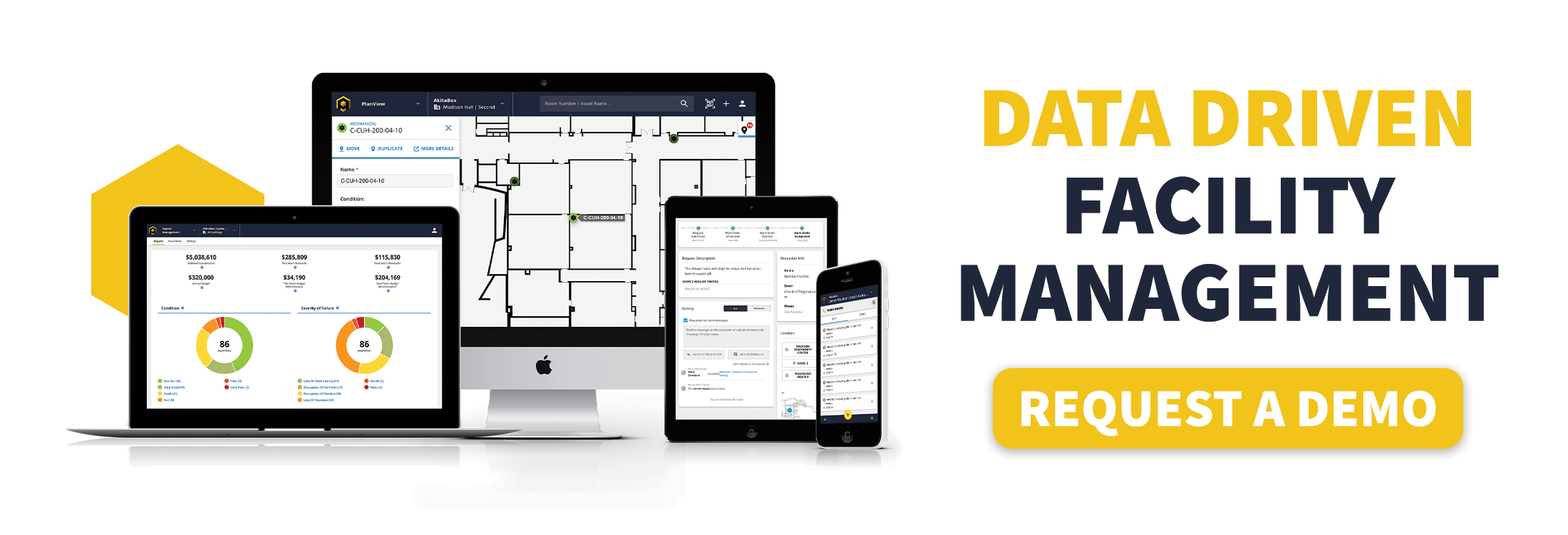Whether executives realize it or not, there’s an incredible lack of accurate facilities data, which makes it just about impossible to properly assess your facilities’ needs. If you don’t have a clear picture of the condition of your facilities, you’re setting yourself up to fail when it comes time to allocate a budget.
I’m going to explain why your facilities data is failing you, the shortcomings of standard capital planning processes, and 2 ways you can get the accurate data you need for better budgeting.
Your Capital Budgeting Process Relies on Inaccurate Data
Traditional facility capital budgeting processes rely on pulling together several sources of information. Facility directors generally kick off this process by assessing their facilities’ current state and then asking for the money they think they need to keep the buildings warm and the toilets flushing.
- Start with bad data: Gathering the needed data to start the capital budgeting process is an absurdly complicated task using legacy systems. Facility directors must sort through literal and figurative piles of outdated facility condition assessment (FCA) reports, work orders, repair statuses, warranties, and other siloed information. The data needed is often unavailable or inaccessible, leaving directors to rely on technician input and educated guesses.
- Add in some lousy statistics: Once gathered, these inaccurate information points are combined with generic depreciation and maintenance statistics to produce estimates for maintenance and replacement schedules. The problem with these statistics is they aren’t specific to conditions (such as heat, humidity, vibration, etc.) and fail to consider your facilities’ maintenance histories. Therefore, they come with low confidence levels and wide ranges.
- Analyze with simplistic math: All that iffy data is then baked together with generic statistics in a final capital budgeting request in Excel. Sometimes the margin of error/fudge factor is baked into the base numbers and sometimes it’s explicitly called out in the spreadsheet. Sometimes both. Either way, capital planners and budget holders assume that the facility directors have asked for more than they need and cut the request accordingly. Even worse, without accurate data to back up a budget request, it’s seen as nothing more than a line item. There’s no way to communicate the urgency of specific requests accurately.
The final product is generally recognized as a series of estimates and guesswork. In a good year, the mistakes largely cancel each other out. Everyone avoids thinking of the years when they weren’t so lucky.
Bad Data’s Impact on Your Capital Budgeting
Depending on weak data creates plenty of challenges:
- Problematic deferments: Overestimating the stamina of equipment leads to incorrect maintenance deferments. You end up blindsided by unexpected breakdowns requiring emergency repairs or total replacement, which lead to unexpected major expenses. As a result, you may have to deal with safety or operational ramifications and the time-consuming toll of customer dissatisfaction.
- Exceeding useful life: After an asset has reached its useful lifespan, it’s more expensive to maintain it than replace it. But how do you know when you’ve reached that point? Without precise data, this notion that fully functioning equipment is slowly bleeding capital reserves dry becomes particularly hard to communicate.
- Poorly deployed capital: Underestimating how long equipment will hold up leads to the direct mismanagement of capital reserve. When funds are budgeted to resolve problems that don’t transpire, investment gains cannot be realized.
- Incorrect prioritization: Without a clear picture of the overall status of every component of a capital plan, it’s impossible to correctly prioritize for the coming year. Priorities end up being shifted on an ad hoc basis.
- Starting from scratch: Without a current data feed of facility conditions, directors are forced to reassess capital allocation with every budget cycle. From replacements and major repairs to new construction, starting budget planning from square one on big projects consumes vast swaths of time without adding significant value.
|
2 Ways to Overhaul Your Capital Budgeting Process
The good news is that the issues in your capital budgeting process CAN be overcome.
It all starts with … you guessed it … good, dependable data – and the right technology.
Determining where money should be allocated requires an accurate capture of current facility asset conditions at both a granular and global level.
1. Facility Condition Assessment Data
First, you need the necessary data to paint a clear picture of your facility’s current state. A facility condition assessment (FCA) provides a solid baseline of what’s going on. But what if your last FCA is 5 years old? That’s where the technology piece comes in.
FCA software stores all of your assessment data electronically in one place, making it easy to regularly update the information. It also enables you to manipulate the data to see your costs, risks, and priorities.
Read more: 3 Ways an FCA Enables Better Capital Planning
2. Capital Management Software
Second, you need a tool that can provide reliable cost and spending projections. And not just general, industry-standard projections, but ones based on YOUR data from YOUR assets.
AkitaBox’s Capital Management solution collects and analyzes your specific data from your assets and facilities to model future scenarios and provide real-time insights.
It combines integrated data gathering and global pools of information to support your capital budgeting now and in the future. Using this type of platform makes it possible to design budgets correctly the first time, including appropriate allocations for replacement and major repairs, so projects can be carried out on time without funds running dry.
Read more: Using Facility Management Metrics to Support Capital Planning
Experience the power and confidence that comes from knowing you have an accurate facilities budget based on data you can trust. See AkitaBox in action.



